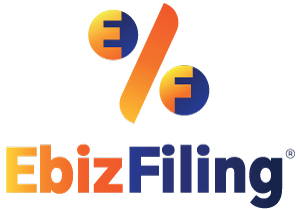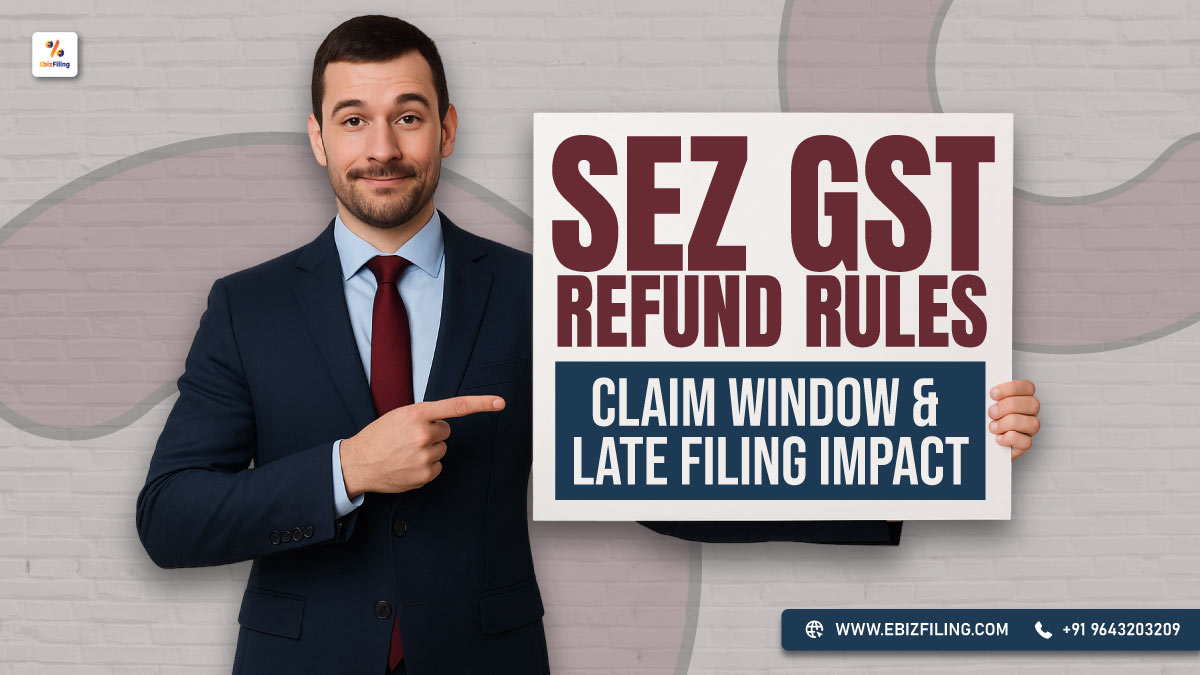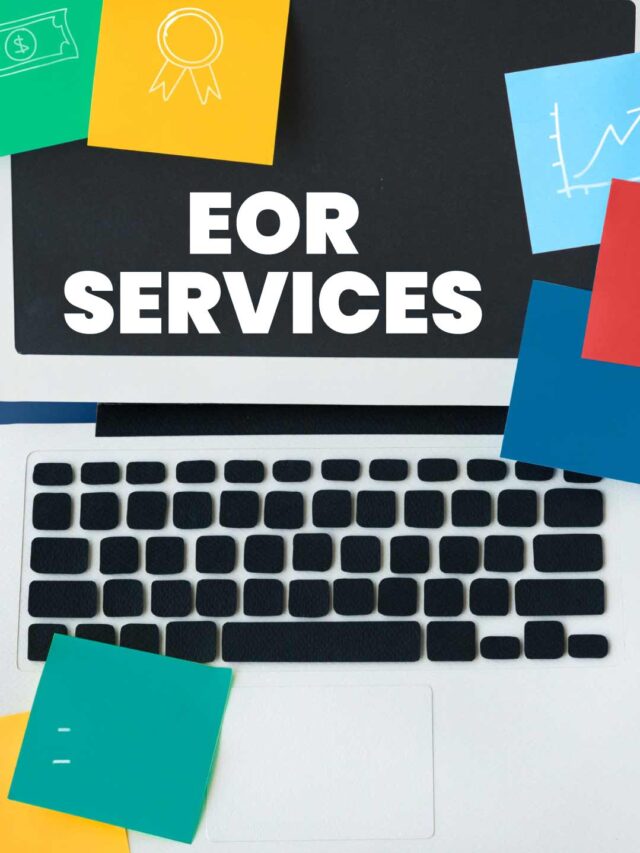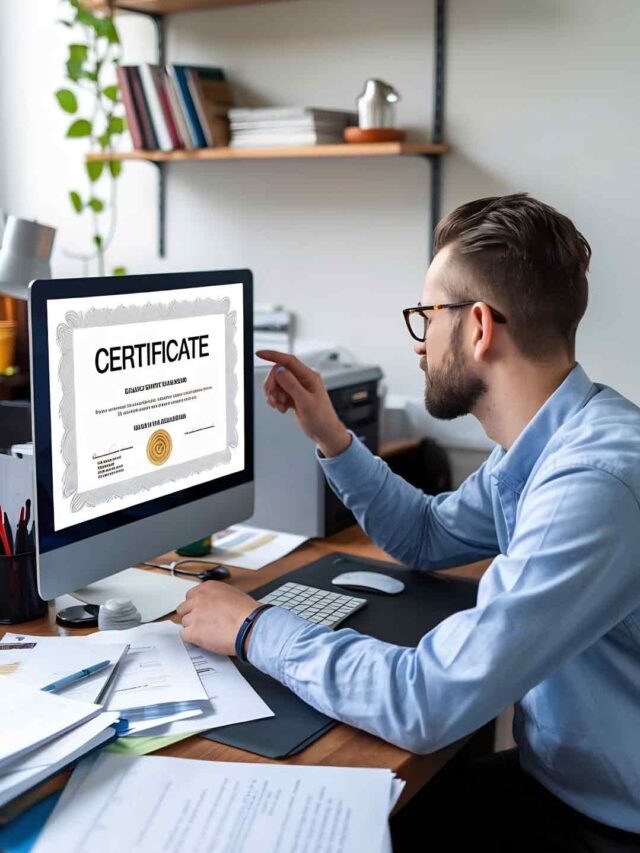What is a SEZ GST Refund?
When a business sells goods or services to a Special Economic Zone (SEZ) unit or developer, these sales are treated as zero-rated supplies under GST. This means the supplier doesn’t charge GST on their invoice.
However, the supplier likely paid GST on the materials or services they used to make those supplies. Since the final sale is zero-rated, the supplier can ask for a refund of the GST they paid on those inputs, known as Input Tax Credit (ITC).
There are two ways suppliers can do this:
- Without paying IGST upfront: They submit a Letter of Undertaking (LUT) or a bond before supplying goods or services, then claim a refund on the not utilized input tax credits.
- By paying IGST first: Suppliers pay IGST when making the supply and later apply to get that IGST amount refunded.
Keep in mind:
- Only the supplier can claim this refund, not the SEZ unit or developer receiving the goods or services.
- The supplies must be for authorized activities inside the SEZ, and a designated SEZ officer needs to confirm or approve the receipt.
- The refund claim is filed online on the official GST portal using Form GST RFD-01, along with important documents like invoices, SEZ officer approval, the LUT copy, and for services, proof of payment like bank certificates.
Who Can Claim the SEZ GST Refund?
Only the supplier of goods or services to a Special Economic Zone (SEZ) unit or developer is eligible to claim the GST refund. This means that the SEZ unit or developer itself cannot file for the refund on the GST paid by the supplier.
The reason behind this rule is that under GST law, the benefit of zero-rated supplies (supplies without GST charge) is designed to encourage suppliers to export goods or services. The tax credit on inputs used by the supplier should not become a cost for them, so the government allows the supplier to claim back the GST paid.
Important conditions the supplier must meet:
- The goods or services supplied should be used for authorized operations inside the SEZ. This means the supplies must support the SEZ’s approved business activities.
- The SEZ’s designated officer must endorse or certify that the supplies have been received for authorized use. This endorsement is crucial for the refund application.
- The supplier should have filed a valid Letter of Undertaking (LUT) if opting to supply without paying IGST upfront.
Where can you find this information?
- The eligibility and conditions are clearly stated under Section 54 of the CGST Act, 2017 and in notifications issued by the Central Board of Indirect Taxes and Customs (CBIC), which oversees GST administration.
- You can refer to the official GST portal for refund rules: www.gst.gov.in.
- The SEZ Act and Rules, available at the Ministry of Commerce SEZ website, also highlight the role of the designated officer in certifying authorized operations.
By ensuring these conditions, suppliers can confidently claim their GST refunds without complications, maintaining smooth cash flow and compliance.
What is the Time Limit for Claiming the Refund?
When claiming a GST refund for supplies made to SEZ units or developers, timing is very important. According to the GST law (Section 54(1) of the CGST Act), you must file your refund application within two years from the relevant date.
For SEZ supplies, the “relevant date” usually means the day when the goods are fully admitted into the SEZ for authorized use, as confirmed by the SEZ’s designated officer. This approval acts as proof that the goods have entered the SEZ and are being used properly.
If you miss this two-year deadline, your refund claim may be rejected. So, it’s important to keep track of when your goods enter the SEZ and apply for your refund promptly to avoid losing out.
For the latest official guidelines, you can visit the GST portal at gst.gov.in.
What Happens if the Claim is Filed Late?
Usually, if you file your GST refund claim after the two-year deadline, it won’t be accepted. The law is quite strict about this time limit.
However, there can be rare exceptions. For example, if there were genuine technical problems with the GST portal that stopped you from filing on time, courts have sometimes allowed late refund claims.
One such case was with M/S Sethi Sons (India), where the Delhi High Court allowed the refund even though it was filed late because the taxpayer faced technical difficulties on the portal.Still, it’s best to file your refund claim as early as possible to avoid any risk of rejection.
Steps to Claim SEZ GST Refund
Step 1: File a Letter of Undertaking (LUT)
Before you start supplying goods or services to a SEZ without charging IGST, you need to file a Letter of Undertaking (LUT) on the GST portal. This allows you to make zero-rated supplies without paying IGST upfront.
Step 2: Gather All Required Documents
Make sure you have these documents ready:
- GST RFD-01: The refund application form.
- Statement 5A: Details of invoices for SEZ supplies.
- Tax Invoices: Copies of invoices issued to SEZ units.
- SEZ Endorsement: Proof that the goods or services were received in the SEZ.
- Bank Payment Receipts: If you supplied services, these show the payment received.
- Copy of LUT: The Letter of Undertaking you filed for the financial year.
- Electronic Credit Ledger: Shows your available not utilized Input Tax Credit.
Step 3: Submit Your Refund Application
Log in to the GST portal and go to Services > Refunds > Application for Refund. Choose the option for refunds on supplies made to SEZ without tax payment, upload all your documents, and submit your application using your Digital Signature Certificate (DSC) or Electronic Verification Code (EVC).
Step 4: Keep Track of Your Application
Once submitted, you’ll get an Application Reference Number (ARN). Use this number to track your refund status anytime on the GST portal by going to Services > Refunds > Track Application Status.
Challenges in the Refund Process
While claiming a GST refund for supplies to SEZ units is a helpful benefit, the process can sometimes be tricky due to a few common challenges:
1. Technical Issues
Sometimes, the GST portal may face technical glitches or downtime. These problems can delay filing your refund application or even cause errors during submission. Such issues can be frustrating, especially when you’re working against tight deadlines.
2. Documentation Errors
Submitting incomplete or incorrect documents is one of the main reasons refund claims get rejected. Missing details in invoices, lack of proper SEZ approvals, or wrong information in forms can cause delays or refusals. It’s important to double-check all paperwork before submission.
3. Compliance Issues
GST rules and procedures have to be followed carefully. If the supplier fails to meet these requirements—like not filing the refund within the time limit or not using the correct forms it can impact the refund eligibility. Keeping up with GST regulations and updates is essential to avoid problems.
Understanding these challenges can help businesses prepare better and make the refund process smoother.
Conclusion
Claiming a GST refund on supplies to SEZ units or developers can really help businesses, especially those who are involved in exports and manage their cash flow better. But to make the most of this benefit, it’s important to file your claim on time and keep all your documents in order. If you face any difficulties or are unsure about the process, get help from a professional who will make things much easier and ensure your refund is processed smoothly.
Suggested Read :
GST Return Filing for Multiple States
How LUT Simplifies GST Compliance?
Difference Between GST LUT and Bond











June 26, 2025 By Team Ebizfiling
LUT Renewal FY 2025-26: GST Exporter’s Checklist Introduction If you’re an exporter in India, you need to submit a Letter of Undertaking (LUT) each year to avoid paying IGST upfront on your exports. This is a facility given under Section […]
June 9, 2025 By Team Ebizfiling
GST Implications on Foreign Digital Service Purchases by Indian Businesses Introduction If your business in India uses digital services from foreign companies like Adobe or Zoom, GST rules apply to you. Understanding how GST works on these purchases helps you […]
April 26, 2025 By Team Ebizfiling
GST Compliance Calendar with Due Date for FY 2025-26 And GST Return form The GST returns Compliance Calendar for 2025-2026 helps businesses keep track of important deadlines, including the Monthly GST Return Filing Due Date for returns like GSTR-1, GSTR-3B, […]